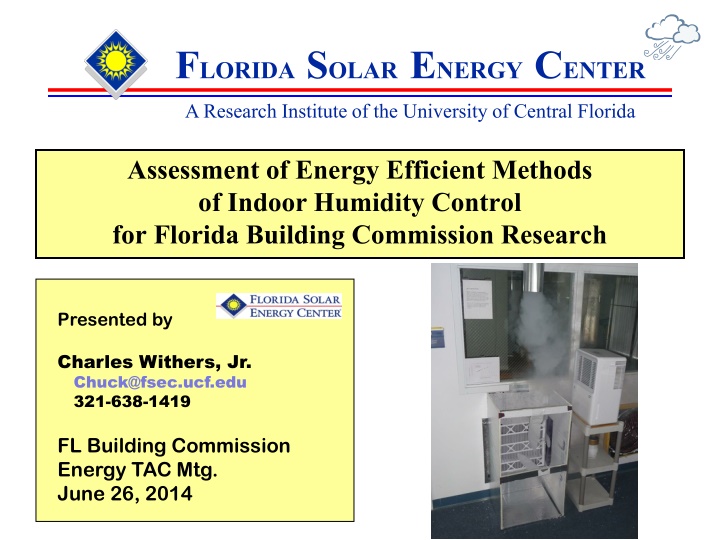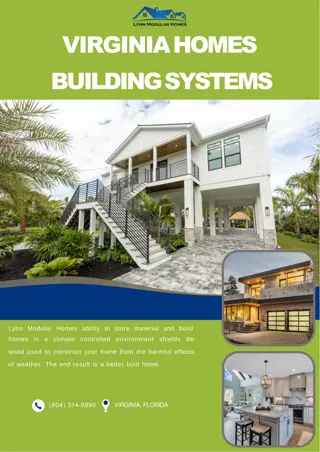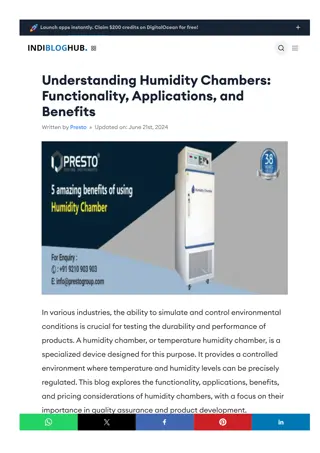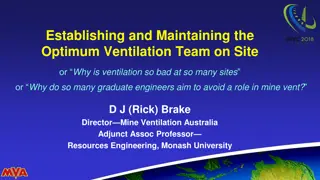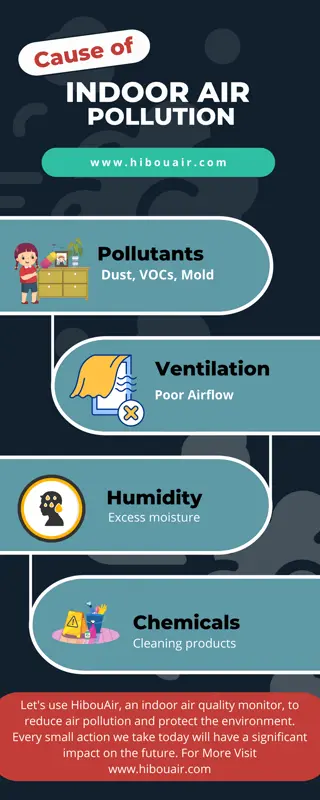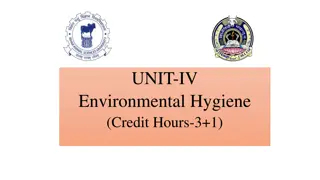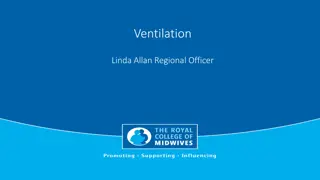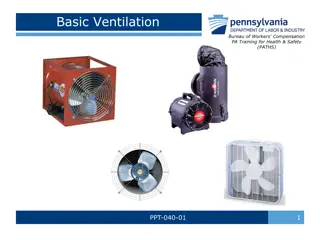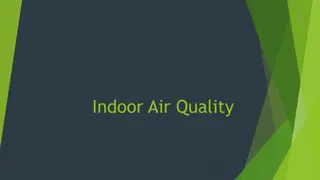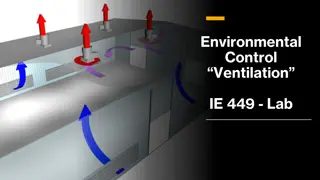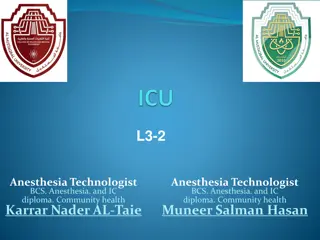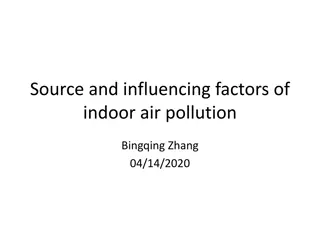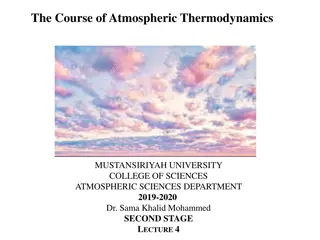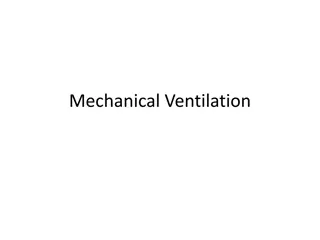Energy-Efficient Indoor Humidity Control for Florida Homes with Mechanical Ventilation
Assessment of energy-efficient methods for indoor humidity control in Florida buildings, focusing on code-required mechanical ventilation rates. Research objectives include evaluating approaches and technologies through experiments to manage latent load, improve indoor RH, and reduce energy consumption.
Download Presentation

Please find below an Image/Link to download the presentation.
The content on the website is provided AS IS for your information and personal use only. It may not be sold, licensed, or shared on other websites without obtaining consent from the author.If you encounter any issues during the download, it is possible that the publisher has removed the file from their server.
You are allowed to download the files provided on this website for personal or commercial use, subject to the condition that they are used lawfully. All files are the property of their respective owners.
The content on the website is provided AS IS for your information and personal use only. It may not be sold, licensed, or shared on other websites without obtaining consent from the author.
E N D
Presentation Transcript
FLORIDA SOLAR ENERGY CENTER A Research Institute of the University of Central Florida Assessment of Energy Efficient Methods of Indoor Humidity Control for Florida Building Commission Research Presented by Charles Withers, Jr. Chuck@fsec.ucf.edu 321-638-1419 FL Building Commission Energy TAC Mtg. June 26, 2014
Presentation Overview Brief Background on Research Need Research Objective Method Findings Conclusions
Background / Research Need Florida Code (2014) will require houses be airtightness tested and permit no air leakage exceeding 5 ACH50. It will require mechanical ventilation in homes <5ACH50. Currently ventilation via: 1. Naturally induced wind and temp. 2. Mechanically induced kitch./bath exhaust duct leakage (unintended) 3
Background / Research Need Natural forces that drive infiltration in Florida homes are small. Reasonable expectation mechanically vented homes will experience greater air change rates and increased latent loads. Concern of adequate indoor RH control for at least periods of time. Supplemental dehumidification may therefore be necessary in some homes where RH is desired to be controlled. Currently, houses not mechanically vented likely have average about 0.21 ach vs 0.35 ach target 4 1 Swami, M., J. Cummings, R. Sen Sharma, C. Withers, M. Basarkar "Florida Building Code - Enhance Florida's Building To Next-Generation Energy & Mechanical Codes and Enrich Compliance " Florida Solar Energy Center , Rpt: FSEC-CR-1678-06, Nov. 29, 2006. 2 ach off = ACH50/40 per Cummings, J.B.,Moyer, N., and Tooley, J.J., "Radon Pressure Differential Project, Phase II: Infiltration,"FSEC-CR-370-90, Florida Solar Energy Center, Cocoa,FL, November 1990 3 Cummings,J.B., Tooley,J.J. and Moyer,N., "Investigation of Air Distribution System Leakage and Its Impact in Central Florida Homes," FSEC-CR-397-91, Florida Solar EnergyCenter,Cocoa, FL, January 1991.
Research Objective To identify approaches and technologies which can achieve energy-efficient indoor RH control in Florida homes with code required mechanical ventilation rates. 1. Assess energy efficiency and cost-effectiveness of various approaches to manage the latent load in homes from a literature review and existing experimental data. Complete a minimum of four different experiments in a lab building to assess resulting indoor RH and energy consumption. The experiments are to use various latent load management approaches (including a dehumidifier) at various levels of mechanical ventilation. 2. 5
Lit Review Results What does it mean to manage the latent load or maintain effective RH control in Florida s climate? It depends who you ask and who its intended for. Generally, limiting the hours of indoor RH at or below 60% should be satisfactory for most, and avoid potential moisture issues. 6
Task 1 Lit Review Several RH control measures were identified, but there are important considerations in selecting one. Factors to be considered are: Health needs of occupants House design Personal comfort / aesthetic preferences First cost and operational costs Occupant driven operations
Task 1 Lit Review The lowest first cost measures: Overcooling lowering setpoint to force more run time cold and clammy (late fall/winter) Some dual and var. capacity have tstats that permit 2 F overcooling in RH control Reduced fan speed Lowers SHR, better dehumidification, but limited to runtime (sensible load vs cap.) Effectiveness depends on cooling run-time & can not control RH all hours year-round 8
Task 1 Lit Review Dehumidifier (DH) generally the lowest first cost measure that can control RH effectively year-round, but: Cost can > $ 1800 (high end) Least efficient / high energy operating cost Units < $ 300 generally louder and lowest efficiency OA could be ducted near the DH for better RH control Consider separate dehumidistat Physical space installation limitations Have to drain condensate somewhere 9
Task 1 Lit Review Other potential technologies for improved RH control Can not control RH all hours of year ERV- energy recovery ventilation Heat pipes Sub-cool reheat Full condensing reheat (nearly) Dual and Variable Capacity Central Systems 10
Task 1 Lit Review Other potential technologies for improved RH control Can effectively control RH all hours Desiccant Dehumidifier DOAS- central ducted design Minisplit OA system? 11
Task 2 Experimental Research Completed four different experiments: Two energy-efficient configurations Two different ventilation rates Dehumidifier controlled by a remote dehumidistat set at 60%RH 12
Task 2 Experimental Method One Test Building 2000 ft2 with R5 CMU walls. Slab on grade some carpet/tile Windows single- pane clear. Ceiling R19 batt. Building airtightness 4.5 ACH50. Ducts CFM25out=0. A manual J8 load calculation on the building calculated a summer 99% design total cooling load of 35,780 btuh based on 130 cfm OA. Controlled internal sensible 3851btuh and latent loads 397btuh. Two Ventilation Rates 60 cfm- 2012 IMC and 2012 IRC requirement for 3 bedroom home between 1501ft2-3000 ft2. 130 cfm- high end for large 4-5 bedroom or for 0.5 ACH50 using ASHRAE62.2-2013 not FL code req. 13
MSDOAS Test Configuration Test 1:130 cfm OA to MS; Central SEER21; DH backup at 60%RH Test 2:60 cfm OA to MS; Central SEER21; DH at 60%RH 14
SEER21 Var. Cap. System Tests Test 3: 60 cfm OA to Central SEER21; DH at 60%RH Test 4: 130 cfm OA to Central SEER21; DH at 60%RH 15
Conclusions Lit. review found several RH control measures. Consider home design and occupants needs before selecting one. Overcooling and reduced fan speed may be acceptable to some. Dehumidifer lowest first cost with several potential negative factors. Dual cap. and Variable cap. Central systems may be adequate for many. All four experiments controlled indoor RH between 47%-54% RH Eliminated need for dehumidifier. Not tested under fall/winter season pd.s (most challenging condition).
Conclusions OA captured at return of central SEER 21 VC is energy-efficient and effective. Only 22.3 kwh/day cooling at 130 cfm OA (seasonal summer day) Drops to 21.8 kwh/day at 60 cfm OA (0.5kwh/day less, 2.2%) MS not needed with central SEER 21 used 2.80 kWh/day (12.8%) more energy than just S21 central. Better RH control, but not necessary. Phase 2 continuation research is needed: DBPR approved Phase 1 (terminates June 30, 2014). Determine cost-benefit of SEER21 OA relative to base efficiency case SEER13 FC. MS with SEER 13 likely energy savings and better RH control vs OA ducted to SEER13.
Further Research Needs Based on Phase 1, we recommend the following testing in Phase 2: (actual # of tests that can be conducted are dependent upon time available to rotate through experiments.) Conduct further testing July 2014- November 15, 2014. 1. SEER 13 central FC system; 60 cfm OA ducted to central zone near DH control. This will be an important base efficiency test to compare to other results and evaluate how much DH energy may be needed. 2. SEER 13 central FC system; 60 cfm OA ducted to return. Provides direct comparison to Test 3. 3. SEER 13 central FC system; 60 cfm continuous exhaust. 4. 60 cfm OA ducted to MS with SEER 13 central FC system. Given the much lower efficiency of the SEER13, expected much lower operating costs than running the S13 unit alone and will result in lower indoor RH which could eliminate the need for an inefficient dehumidifier. 5. Collect additional data for Phase 1 Test 3 S21 VC (use RH control feature) @ 60 cfm OA. This test uses a vent rate close to most homes and was the most efficient of Phase 1 testing. Final Report deliverable with comparison of energy use and RH control effectiveness of all tested measures with conclusions regarding any learned limitations.
Questions? Thank You Chuck Withers chuck@fsec.ucf.edu 321-638-1419
